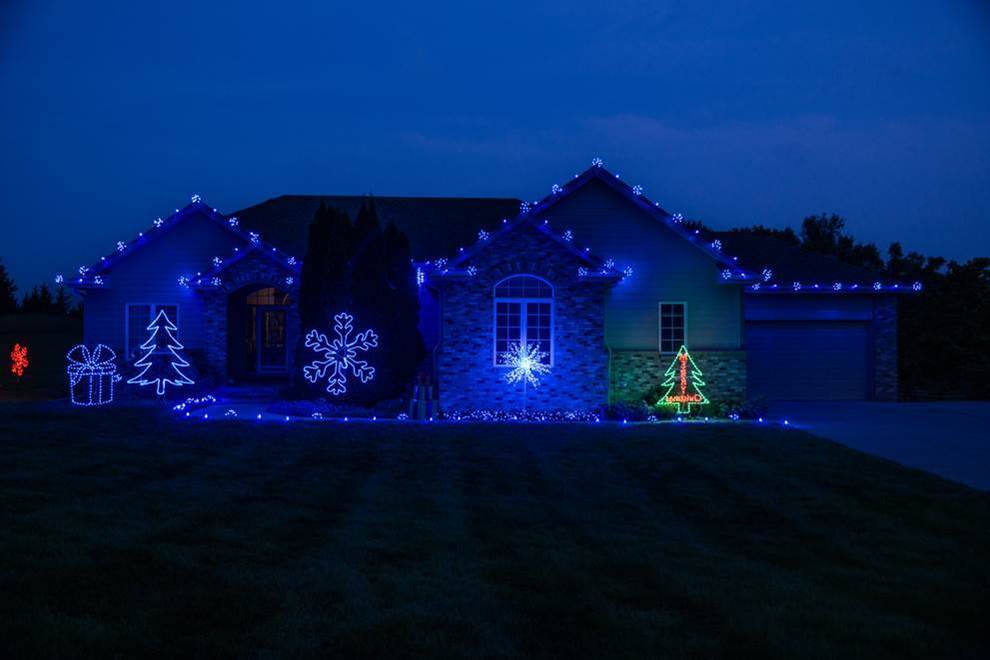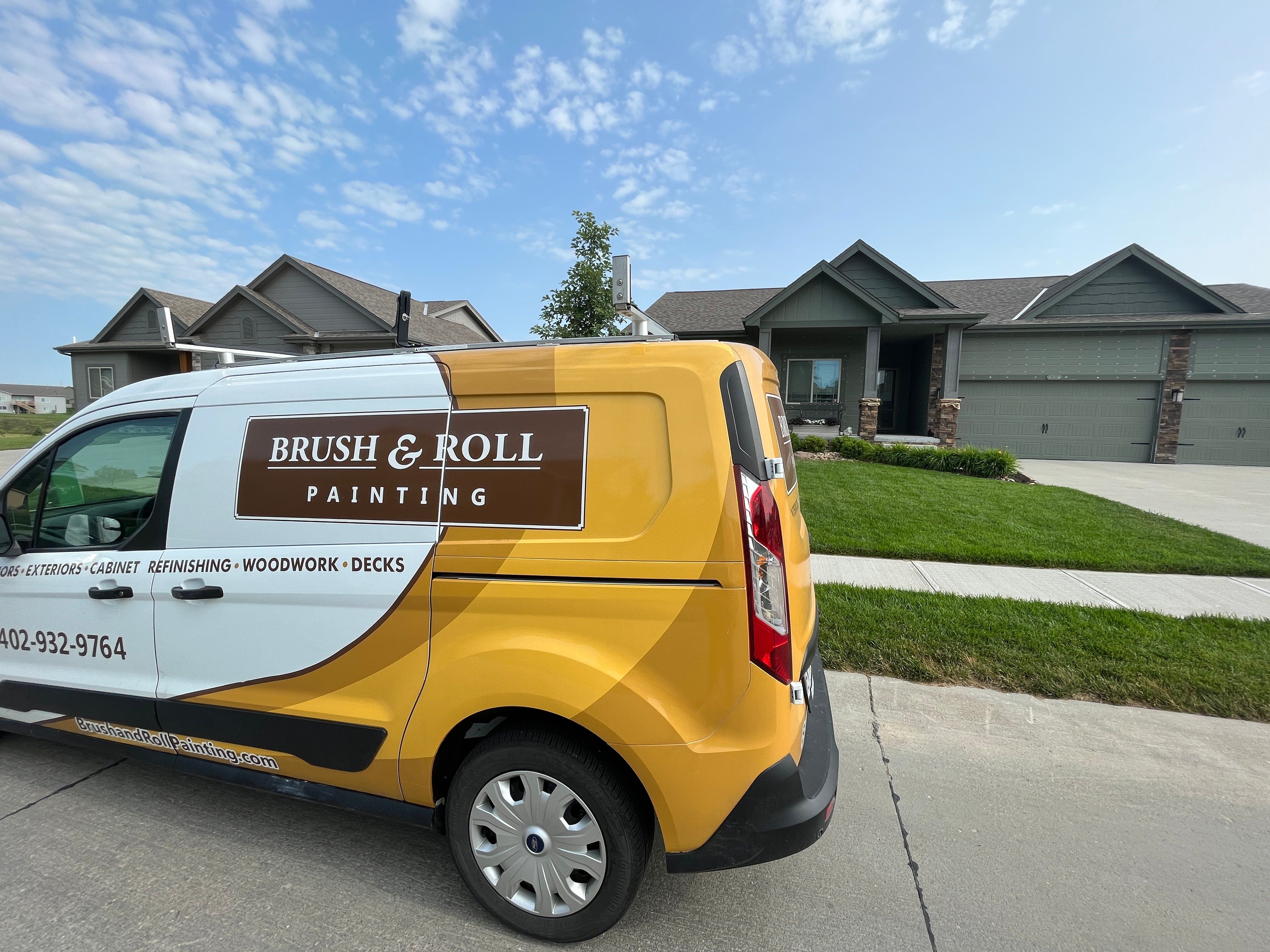Guide to Mil Thickness for Exterior Painting
March 20th, 2024
3 min read
-Mar-20-2024-04-50-44-6455-PM.png?width=800&height=418&name=Blog%20Post%20Image%20Size%20(5)-Mar-20-2024-04-50-44-6455-PM.png)
When it comes to painting the exterior of your home, there's more to consider than just choosing the right color. Understanding mil thickness is crucial for achieving a durable and long-lasting paint job. If you have struggled with exterior paint fading or peeling, it could be due to the paint not being applied at the correct mil thickness.
While it’s a painter's job to ensure that paint gets applied evenly, it’s important, as a homeowner, to know how exterior paint is applied. All painters have a different process. So it is crucial to understand mil thickness so you can be confident your exterior painting company is providing the durable, lasting service that you deserve.
Brush & Roll Painting is a premier exterior painting company in Omaha, NE. We use high-quality, durable exterior paint products to ensure our customers have a lasting paint job.
In this guide, we'll break down what mil thickness is and why it's important for you to understand. By reading this article, you will have a better idea of what you are looking for while hiring an exterior painter for your next project.
What is Mil Thickness for Exteriors?
Mil thickness refers to the measurement of the thickness of paint or coating applied to a surface. One mil is equal to one-thousandth of an inch (0.001 inch).
So, when you hear someone refer to a paint being applied at "5 mils," it means that the coating is 0.005 inches thick.
Why is Mil Thickness Important to Understand for Exterior Painting?
It’s Different for Each Exterior Paint
Low-Quality Exterior Paint
Low-quality or cheap paints typically have lower pigment concentration and inferior binders, resulting in thinner coatings and less durability. When applying low-quality paint, it's essential to compensate for its shortcomings by applying multiple coats to achieve adequate coverage and mil thickness.
When using low-quality paint, painters should aim for thinner coats, around 2-4 mils per coat, and be prepared to apply additional coats as needed to ensure proper protection and longevity.
High-Quality Exterior Paint
High-quality paints, on the other hand, contain higher levels of pigments and premium binders, resulting in thicker coatings and superior durability.
You can achieve optimal results with fewer coats and a thicker mil thickness per coat when applying high-quality exterior paint. Painters should aim for thicker coats, around 4-6 mils per coat, to maximize coverage and protection while minimizing the number of applications required.
Ultimately, higher-quality paints can save you money in the long run, as you are using less product for exceptional results. These products also last longer, meaning the home doesn’t need to be repainted as often.
Protection Against the Elements
-Mar-20-2024-04-36-05-4806-PM.png?width=547&height=286&name=Blog%20Post%20Image%20Size%20(4)-Mar-20-2024-04-36-05-4806-PM.png)
The primary purpose of exterior paint is to protect your home from the weather elements, such as rain, snow, sunlight, and extreme temperatures. A thicker coating of paint provides better protection against these elements, helping to prevent moisture from seeping into the underlying materials and causing damage.
Durability and Longevity
A thicker layer of exterior paint is more durable and long-lasting than a thin one. It provides better coverage and can withstand wear and tear over time. This means you won't have to repaint your home as frequently, saving you time and money in the long run.
Smooth and Even Finish
-Mar-20-2024-04-51-09-7217-PM.png?width=595&height=311&name=Blog%20Post%20Image%20Size%20(6)-Mar-20-2024-04-51-09-7217-PM.png)
Applying paint at the proper mil thickness ensures a smooth and even finish. Thin coats of paint may result in an uneven appearance, with streaks and patches showing through.
On the other hand, a thicker coat of paint provides better coverage and hides imperfections in the surface, giving your home a professional-looking finish.
How to Measure Exterior Paint Mil Thickness
Paint Thickness Gauge
The most accurate way to measure mil thickness is to use a paint thickness gauge. These devices use magnetic or eddy current principles to measure the thickness of the paint or coating on a surface. Simply place the gauge against the painted surface, and it will display the mil thickness reading.
Manufacturer Recommendations
Another way to ensure the proper mil thickness is to follow the manufacturer's recommendations.
Most paint manufacturers provide guidelines for application, including the recommended mil thickness for optimal performance. Painters should be sure to read and follow these instructions carefully when painting your home.
Conclusion
In conclusion, understanding mil thickness is essential for homeowners when it comes to exterior painting. Many problems with exterior paint can stem from an improper mil thickness.
A thicker coat of paint provides better protection against the elements, improves durability and longevity, and ensures a smooth and even finish.
By understanding mil thickness and proper application techniques, you can now be more confident while hiring an exterior painting company to achieve a beautiful and long-lasting paint job for your home.
Brush & Roll Painting has been exterior painting Omaha homes since 1996. Our process includes detailed prep work and proper paint application that leaves durable, flawless results.
Now that you understand mil thickness in regards to exterior painting, continue checking things off your checklist. This Exterior Painting Project Checklist will ensure you have a smooth process and paint job for your upcoming project.
Kaylea is the Brush & Roll Painting Content Manager. Kaylea is a Journalism and Media Communications summa cum laude graduate with a minor in Marketing from the University of Nebraska at Omaha. Kaylea manages the marketing for Brush & Roll Painting.


















-Jul-23-2025-02-21-33-5468-PM.png?width=800&height=418&name=Blog%20Post%20Image%20Size%20(2)-Jul-23-2025-02-21-33-5468-PM.png)




-Oct-22-2025-01-39-19-5208-PM.png?width=800&height=418&name=Blog%20Post%20Image%20Size%20(1)-Oct-22-2025-01-39-19-5208-PM.png)


